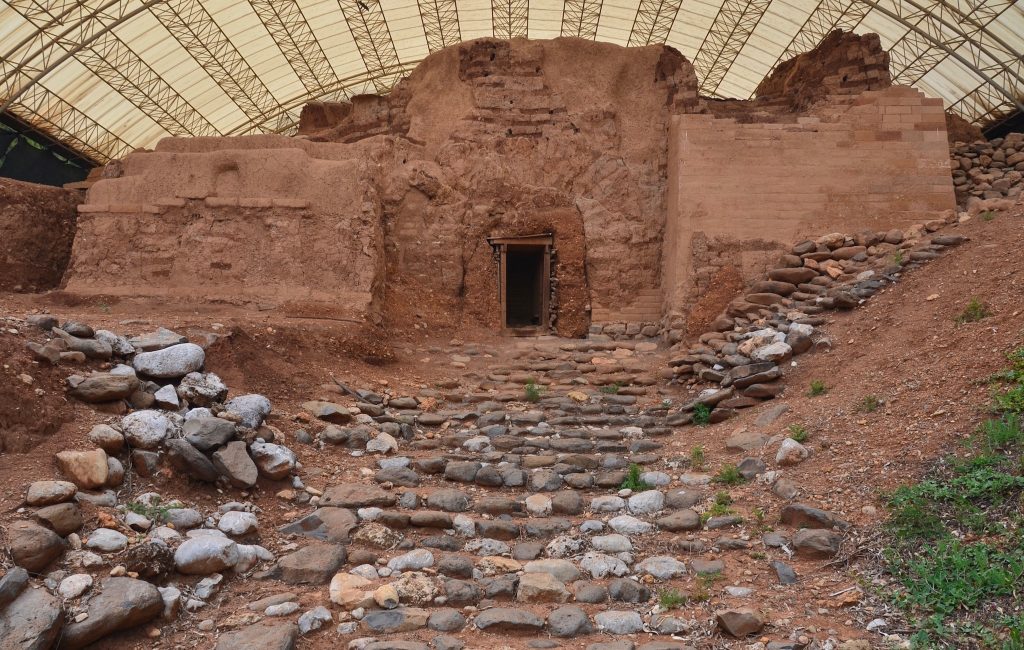In the heart of Upper Galilee in northern Israel lies an extraordinary architectural marvel that speaks volumes about the ingenuity and vision of ancient civilizations. This site, known as Tel el Qadi or more commonly Tel Dan, is home to a remarkable discovery that has captivated the archaeological world—the oldest known man-made arch in human history. This groundbreaking find has not only deepened our understanding of ancient engineering and architecture but has also redefined our perceptions of human innovation during early periods of civilization.

The story of Tel Dan begins thousands of years ago, tracing its origins back to the Neolithic period around 9000 BC. During this era, early human settlers selected this strategic location to build a community. The region’s abundant natural resources and favorable geography made it an ideal choice for a settlement that would grow to influence civilizations for millennia. Despite relying on rudimentary tools by today’s standards, these early settlers laid the foundation for what would later become a prominent center of ancient culture and development. Their resourcefulness and vision set the stage for one of history’s most fascinating archaeological sites.
As centuries passed, Tel Dan underwent significant transformation, particularly during the Bronze Age. By this time, the settlement had evolved into a formidable Canaanite stronghold, distinguished by its advanced architectural features. This era witnessed the construction of massive defensive walls and intricately designed city gates, which were essential for safeguarding the city from external threats. These structures not only highlight the strategic importance of Tel Dan but also underscore the technological advancements achieved by its inhabitants. The people of Tel Dan demonstrated a profound understanding of engineering and urban planning, making their city a model of innovation in the ancient world.
Among the numerous discoveries at Tel Dan, one stands out as the crown jewel—the extraordinary mudbrick city gate. This architectural masterpiece has become a symbol of the site’s historical and cultural significance. The gate, designed with three arches, represents a revolutionary leap in construction techniques for its time. The innovative use of the arch—a structural feature now ubiquitous in architecture—was unprecedented during this period. The preservation of the gate, including a well-defined stairway leading to it, offers modern visitors a rare opportunity to step back in time and imagine the vibrant life that once animated this ancient metropolis.
What makes this gate particularly remarkable is the material and method used in its construction. Built entirely from sun-dried mud bricks, the structure showcases the resourcefulness and ingenuity of its builders. Despite the simplicity of the materials, the gate’s design reflects an advanced understanding of engineering principles. The arch-shaped lintel, in particular, stands as a testament to the creativity and skill of ancient architects. This structure is not only the earliest known intact archway in human history but also a precursor to many iconic architectural achievements of later civilizations, such as the Roman aqueducts and Gothic cathedrals.
The preservation of this ancient arch offers invaluable insights into the capabilities of early human societies. Its existence challenges long-held assumptions about the limitations of ancient engineering and reveals that sophisticated construction techniques were in use far earlier than previously believed. The arch at Tel Dan demonstrates that the drive for innovation and the ability to overcome challenges with creativity have always been fundamental aspects of human civilization. It serves as a reminder that even with limited resources, ancient builders were able to achieve extraordinary feats that continue to inspire us today.
The historical significance of the Tel Dan arch cannot be overstated. Beyond its technical and architectural achievements, the site provides a vital link to the past, connecting us to the lives and aspirations of those who walked the earth thousands of years ago. The arch stands as a tangible representation of human resilience and imagination, offering a glimpse into a world where innovation was born out of necessity and determination. It is a bridge that spans the vast expanse of time, reminding us of the shared legacy of human creativity that unites us across generations.
For modern archaeologists and historians, the discovery of the Tel Dan arch has been nothing short of transformative. It has prompted a re-evaluation of the timelines and narratives surrounding the development of architectural techniques in ancient civilizations. The site serves as a crucial piece of the puzzle in understanding the evolution of human ingenuity, providing evidence that sophisticated engineering solutions were being implemented long before the rise of classical civilizations like Greece and Rome.
Today, Tel Dan is not only a treasure trove for archaeologists but also a destination that captures the imagination of visitors from around the world. Walking through the ancient city, one can’t help but marvel at the achievements of its builders and the enduring legacy they left behind. The preservation of the site is a testament to the efforts of archaeologists who have worked tirelessly to uncover and protect this invaluable piece of human history. Their work ensures that the story of Tel Dan continues to inspire and educate future generations about the boundless potential of human innovation.
In conclusion, Tel Dan stands as a powerful symbol of the ingenuity and determination of ancient civilizations. The discovery of its groundbreaking arch challenges our understanding of human history and engineering capabilities, revealing that the seeds of innovation were sown far earlier than previously imagined. The site offers not only a window into the past but also a reminder of the enduring human spirit that drives us to reach for new heights. As we reflect on the achievements of Tel Dan’s builders, we are reminded of the universal drive to innovate, create, and leave a lasting legacy for generations to come.





